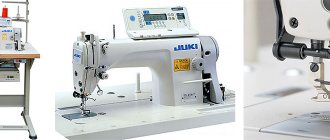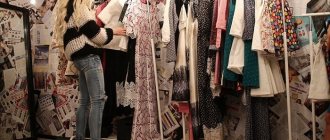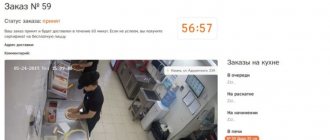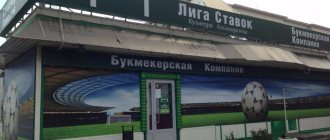Attachments: from 130,000 rub.
Payback: 6 months or more
Creating your own brand often starts with an idea rather than a business plan. Young designers and representatives of related professions (journalists, buyers, marketers), due to their in-depth knowledge of the industry, are the first to notice and occupy an empty niche. A person who is not familiar with fashion trends, market demands, and the assortment matrix will have to do a lot of research. But it is not at all necessary to be able to sew and design clothes to organize a business in the fashion industry.
Content
- Market analysis
- About your own business
- Description of the sales market
- Paperwork
- Marketing
- Production plan
- Organizational structure
- Budgeting
- Risks when opening a store
- Pros and cons of opening a store
- Conclusion
Clothing is a product that will be necessary regardless of the time of year. As a rule, females like to dress up. Therefore, when opening a store, you should focus, first of all, on them.
Today, things should represent the lifestyle of the wearer. Women's clothing must comply with all fashion trends and quality standards, so the assortment must be rich. There are more and more people preferring one brand every year. However, there are a large number of niche stores offering goods of the same brand. Therefore, it is worth emphasizing the sale of goods from different manufacturing companies, the so-called multi-brand store. Here you can sell clothes for different ages, have a wide range of products, a collection of well-known brands and little-known brands will be presented. Multi-brand stores are divided into several categories.
- Premium stores with big receipts. They are usually located in separate premises or in prestigious shopping centers. They do not occupy a very large part of the market.
- Stores with average price of goods. They are in great demand due to their price. The markup on products is significantly lower than in premium stores, and the quality is in no way inferior.
Don't forget about stores in the low price segment. They are located in markets and residential areas. Often these are second-hand or stock stores. During a crisis, such stores are popular, and the demand for goods increases significantly. The main barrier to entry into the clothing store market will be the initial investment, since the process of opening a store is very expensive. Large expenses will be associated with repairs, rent during repairs and the purchase of goods. Be sure to focus your attention on studying and checking suppliers for the quality of the products they offer and reliability, and selecting personnel who will be motivated to increase sales. In the course of work, attract customers who would later become regular customers of the store.
What does a business plan include?
Title page with company logo and table of contents
Competent branding, naming and logo are an important part in the modern media community. Before choosing a logo, familiarize yourself with logo trends, collect references and create a mood board of meaning. Observation is important when developing a corporate identity, so additionally look through the selection of the best logos on the behance website.
Introduction
This part of the business plan is written very last. Once all the other sections have been created, you should select 10-15% from each section and summarize the point in the introduction. A good exercise for writing short texts is the so-called elevator speech. The essence of the exercise is this: imagine that you are going to a meeting with a very important business angel. You enter the elevator of a skyscraper and quite by chance find yourself alone with a business angel in a completely inappropriate environment. As luck would have it, he asks you: tell me about your project. This is your chance and you have 30 to 60 seconds. What will you tell him? Use this exercise to pick out the essence of each part of your business plan.
Vision and Goals
This part briefly outlines the vision that reflects the brand's goals: what product or service the brand represents, the main customers and market, and the geographic region of operation. This part describes such fundamental issues as the values and philosophy of the brand, the main competitors and the desired ideal future - the “vision”.
Business Description
A detailed description of the business and business processes: what the product is, its functional features, materials, production process, logistics, sales markets. Description of the process of a customer purchasing a product, for example: “The Brand is a young Swedish clothing brand for the city. Our collection is presented in three main hypermarkets in Stockholm. You can also buy all clothes on our website. When a client lands on the site, he or she can select a specific product category, for example, sweaters. In the sweater section, the client selects the product he likes, selects the size and one of the suggested colors, after which he adds the product to the cart and can continue shopping on the site. We track conversions on the website in detail, including after adding a product to the cart. If a client leaves the site and there are unpaid items left, then we send him an automatic notification by email, an SMS to his phone, and a retargeting banner for Facebook with a visual display of the item in the cart. Thus, we return 27% of customers who did not pay for the selected goods the first time.”
In this section, it is important to provide as much substantive information as possible about your brand: sales figures, delivery schedules and logistics process, revenue indicators and ROI / ROMI. Additionally, you can show statistics over the period, indicators of growth and decline in sales for individual units of goods.
Market and competitor analysis
Analysis of the current market in which the brand operates and analysis of potential markets that the brand plans to enter in the next 3-12 months. Among the indicators you need to enter: the total market volume in the region, in the city where the brand is located, including sales via the Internet. If your brand is located in a small city, and the main sales are via the Internet through large online stores such as wildberries and lamoda, then you need to analyze the indicators of the online sales market. It is important to correctly identify competitors, determine their strengths and weaknesses, marketing strategy, evaluate mistakes made and study customer reviews.
When conducting competitor analysis, it is necessary to maintain objectivity in relation to the brands being analyzed. Market analysis is carried out through competitive analysis, because, in essence, it is one piece of information. All your competitors make up the market as a whole. Note that competitors influence the current market. A competitor with a good reputation, a large customer base and product sets the right trends, quality standards and generally develops the market and attracts new potential customers. This is good for your brand (provided that the market is growing. In a flat or falling market, especially a falling market, growth occurs not due to attracting new customers, but at the expense of competitors’ customers).
SWOT analysis
- S - strenghts - strengths of a product or brand that allow you to gain an advantage over competitors
- W - weaknesses - weaknesses of a product or brand that are disadvantages compared to competitors
- O - opportunities - elements of external and internal infrastructure that a brand can use to achieve its goals
- T - threats - shortcomings of external and internal infrastructure that threaten the achievement of goals
In this block, it is important to maintain objectivity: not to overestimate the strengths and opportunities and not to underestimate the weaknesses and shortcomings of the infrastructure. SWOT analysis shows your professionalism in assessing the current market situation. Weaknesses should not just be described as something inevitable, it is important to show a strategy for changing the situation in the future, a clear plan of action.
Marketing plan
This is a documented market research that informs about the company's activities in planning personnel decisions, advertising activities, PR and work with opinion leaders, the acquisition and sale of tangible assets, product production and other important aspects of the company's work. The marketing plan closely interacts with SWOT analysis. Both of these sections are written simultaneously and based on common data. The marketing plan is one of the most important in the structure of a business plan. There is a separate industry that serves the interests of companies in the field of marketing, is engaged in consulting, development and implementation of marketing strategies. This is the most voluminous part of your document, which shows exactly how you will manage your company in the external environment to achieve your goals.
Implementation plan
An implementation plan is a document that contains specific actions, deadlines, and areas of responsibility. If a business plan is a strategy, then an implementation plan is a tactic. This document is written by staff with strategic planning skills.
Financial plan
Comprehensive assessment of the current financial situation and planning for future periods. The financial plan includes all items of income and expenses, divided by direction. Income: sales of clothing, brand accessories, additional income from collaborations, services and sale of tangible assets. Expenses: salary plan, rent of premises, software, purchase of equipment and its depreciation, marketing, advertising, PR, collaborations, development of prototypes and production of finished products, costs of maintaining an experimental laboratory. The financial plan contains calculations of the payback point, the permissible amount of balances and risk assessment and a plan for the distribution of excess income or a request for the amount of required external investment to achieve the goals set within the brand.
Market analysis
Most people dream of opening their own clothing store or boutique. Someone wants to open an online store or discount center. And regardless of the choice, all this can bring you profit. But before choosing the format of a ready-made business plan for a clothing store, it is worth analyzing the market. If you think that it will take a lot of money to open, then this is wrong. Many people believe that a store's success is an investment. Experienced businessmen advise managing the business independently during the first year. Otherwise, you may suffer damage. Let's look at specific store formats.
- Simple store. It can be opened in a large shopping center or in a separate building. In the shopping center you will not have to spend money on placing additional advertising. The main thing is to choose a shopping center that will have a considerable number of departments and will have high traffic. If you open a store in a separate building, then you will have to spend a lot of money to attract consumers. Regardless of the option, expenses will include: rent, employee salaries, taxes, and purchase of goods.
- Showroom. An ideal option for those who do not have initial capital or have it, but not very much. Here you don’t have to spend resources on rent and employee salaries. The disadvantage is the fact that not everyone is ready to set up this kind of store at home. It is also quite problematic to attract consumers to the showroom.
- Online store. They are very common today. There is a lot of competition, but it’s worth assessing the opportunities and taking the best niche. This kind of store will allow you to save on employees, rent, and equipment. Every year, the growth of consumers of goods in online stores is growing significantly. The most popular category is “fashionable clothing and accessories”. It is profitable to open such a store within your city.
If you look at the statistics, you can see that to enter the sales market you will need from 1.5 to 2.5 million rubles. So, we decided to open a regular clothing store with you and hope to make a good profit in the future. You need to decide what kind of clothes you will sell, men's or women's, and maybe even children's. Most often, women follow fashion and love to dress up, hence the conclusion: it is preferable to open a women's clothing store. However, children's clothing is also popular. The smaller one is male. When choosing clothes, consumers focus on the following number of features:
- whether a suitable thing caught their eye;
- product quality. Do not purchase products made from low quality materials. You will only turn away consumers and are unlikely to find regular customers;
- practicality. Women prefer to buy practical things that fit with different types of clothes. This is worth paying significant attention to;
- combination with other things present in the wardrobe;
- brand. Nowadays it is fashionable to buy branded clothes, especially among young people.
Items sold must comply with the above list. Middle-income consumers make up the majority of the population. These are the ones you should focus on when opening a store. Our store will sell women's products at reasonable prices in the shopping center, targeting women in the age group from 18 to 50 years.
Investing in business
Starting your own clothing line from scratch will require an initial investment. Their size depends on the chosen direction and method of sales. Small volumes will allow you to invest your own funds.
For more extensive production, you will have to turn to investors. In this case, you will need to draw up a clear contract, which will clearly indicate the amount and spell out specific conditions that satisfy both parties. A popular name of an investor will help give a good boost at the start, so it is worth enlisting the support of such a person. Let's consider what the initial costs may be, how much money will be needed to start production of sewing cotton dresses:
- Purchase of fabric – 321 rub.
- Design and cutting – 9,630 rub.
- Tailoring – 64,210 rub.
- Additional materials: zippers, buttons, tags, labels, etc. - from 64 rubles. up to 320 rub.
These investments will be needed to create the first samples with which you can attract investors. Therefore, you should take tailoring seriously, and also think about a competent presentation.
Costs of creating the first clothing collection
To launch the line into production, it is necessary to create the first trial collection. Success will depend on it, so saving on low-quality materials is not recommended. To begin with, it is enough to sew 3-5 models in different colors and presented in different sizes.
The initial costs will include the production of patterns - templates for cutting. One sample from a good specialist costs from 3,000 rubles, which means for a full line you will need from 9,630 rubles. The price will depend on the complexity of the template, so the amount indicated is not exact. For cutting and sewing you will have to pay from 70,000 rubles.
Don't forget about creating tags, paper labels with your logo, matching packaging and accessories: zippers, trim, buttons and more. Based on 24 samples of 320 rubles each, we get the amount of 7,680 rubles. Now let’s do a full calculation: templates – 9,630 RUR + cutting and sewing – 70,000 RUR + fabric 321 RUR + accessories – 7,680 RUR. In total, it will take 87,630 rubles to create the first collection. But these were summer dresses. Prices, for example, for gloves or fur coats will be completely different.
Clothing store website and social media design
The idea of a clothing store needs to be realized somehow. You can, of course, try promotion through existing online stores or third-party resources. But such a “simple” method will be too expensive for a novice designer. Large well-known stores charge too high commission fees - up to 40%. Therefore, it is more profitable to think about creating your own website.
Yes, you will have to invest money in hosting and creating a unique domain, but it will be your own brainchild with its own logo and brand differences, which, if successful, will be easily recognizable. To create your website you will need about 13,000 rubles. This is the case when specialists are involved. But you can try to create it yourself using ready-made constructors.
A good promotion would be promotion through social networks by creating your own community or group. To do this, you can use the following tools:
- Arrange a photo shoot and demonstrate models online.
- “Pull up” famous bloggers or popular leaders for promotion.
- Post posts to discuss models.
- Offer a marketing ploy with gifts for reposts.
One order can bring in an income of 500 rubles, while the cost of the application will cost approximately 70 rubles. This prospect is fully justified.
Clothes photography
Selling online must be accompanied by high-quality photographs. Unlike offline stores, here people cannot examine the item up close from different angles, much less try it on. Therefore, the photo should be professional, preferably not on mannequins, but on live models, so that it is easier to imagine how the thing looks on a human figure.
Some young entrepreneurs invite potential buyers for a photo shoot and then post these photos on social networks. Just imagine what a stir there will be for the collection if some celebrity demonstrates it on Facebook or Instagram!
But for this you need to rent a special room and invite a professional photographer. Why is this so important? An ordinary photograph with a phone camera will not display all the most interesting details that may represent the “zest” of the brand. Here it is very important to catch a good angle, balance the lighting and maybe even slightly process the image in Photoshop.
This move cannot be considered cheating. Simply, a higher-quality representation will present the model to the user in a more natural and attractive form. Therefore, a business plan for creating a clothing brand needs to include the services of a photographer. This means that the expense item may increase by the cost of a photo shoot and image processing, and this is at least 20,000 rubles for a collection of ten models.
Additional expenses
You can reduce costs a little if you do some of the work yourself, for example, purchasing the necessary materials for sewing or shooting if there is a capable photographer in the group. But it’s still better to entrust the first collection to professionals.
In addition, there are a number of formal costs that business cannot do without. For example, payment of state duty when opening an enterprise or taxes. These articles will have to allocate:
- For registering your business – 60,000 rubles.
- Renting premises – from 100,000 rubles.
- For the purchase of fabrics/other materials and the creation of a collection - from RUB 500,000.
- For the purchase of equipment - from 300,000 rubles.
- But wages for staff start from 300,000 rubles.
- For advertising – from 150,000 rubles.
In total, you will need 1 million 410 thousand/r.
But you also need to take into account at least 30,000 to form the authorized capital in case of opening an LLC, and payment to the accountant.
About your own business
An average-priced clothing store will have a premises area of 80–100 m² and be located in a shopping center or pavilion. The markup on the product ranges from approximately 100 to 350%. The main profit comes from the trade in clothing for everyday wear. The store's assortment is influenced by the region and time of year. For example, in the north, during autumn and winter, the demand for warm clothing increases. The store must have products that correspond to the season and fashion trends. Skirts, blouses, and T-shirts are considered constant for consumers, regardless of the season. The rest is purely seasonal. According to statistics, T-shirts, T-shirts, and budget knitwear are in great demand. Casual clothing is common among young people. It is suitable for both office and leisure. Product suppliers are brands whose production is located in China and Turkey. All the same warehouses are located in Moscow. Delivery is carried out using logistics companies. The store's work must coincide with the shopping center's operating hours.
Description of the sales market
Initially, it is worth determining the age group that your store will be aimed at. There are 4 groups in total:
- youth 15-25 years old;
- girls from 25 to 35 years old;
- women from 35-60;
- women 60 and older.
Next, we think about the cost of the products that you want to sell. It is best to open a store with average price tags. The advantages of such a store are: a wide range, branded clothing, quality products, budget prices. With good promotion of one such store, you can open several more, thereby forming a network. The disadvantages are: high competition, risks of working in a shopping center.
The target audience
Girls and women from 18 to 55 years old. They are all different, but at the same time they equally want to see beauty and strive to stand out. This could be a wealthy woman or a student who has been saving money for a dress for a long time. I sew to order for children. I sew for my child as needed.
I don’t produce men’s collections because it’s more difficult for me to express myself in them. There is also an external problem - Belarusian men are not ready to experiment and buy exclusive things. If a Belarusian man is wealthy, he is more likely to buy a simple stylish item rather than a designer one. We have a practice: several men's models are sewn in the women's collection. The European tradition is to create full-fledged women's and men's collections. There is a feeling of freedom in Europe - no one points a finger. If someone notices a person dressed differently from everyone else, they don’t show it. But here people are not shy not only to point a finger, but also to come up and make a remark. No respect for personal space.
In recent years, progress has been noticeable; there are more and more fashionable people. But there is always someone who will say that this is a nightmare, that there is no Belarusian design, there has not been and there will not be.
Paperwork
At the initial planning stage, consider what documentation you will need to open a clothing store. Red tape with documents takes a lot of time and effort. First of all, visit the tax authorities. Then you will need permission from the local government to carry out the activity and for outdoor advertising. You will also need a conclusion from Rospotrebnadzor, a lease agreement and agreements with utilities and other services, and papers confirming the registration of the cash register. And this is just the main list of documents. For each of these points, a considerable amount of paperwork will be required. After all, in each structure, before receiving the main permit, you will also need to complete the accompanying documentation.
Marketing
Location plays a key role in a store's marketing campaign. It is very good if your store is located in a large shopping center in your city. There is always a lot of traffic there, and buyers already know that they can find products with an average price tag. Your store should stand out from others and attract attention. Make a bright sign or create arrows on the floor that will lead to your store. You can put stickers with the words promotion or discount on the windows of the windows. Often, shopping centers force all stores to create seasonal sales in order to attract a large number of customers. If your store is located in a separate area, you will have to consider how far away the transport links are and provide customers with good parking. It is better to open in a place where there is good foot traffic. You can also stick the words discounts or promotions on the windows of the store, and also paint arrows on the asphalt that will lead you to your store. You can also use social networks. Most of the population spends a significant amount of time there. This is an effective tool for attracting consumers. You can create a group on VKontakte or create an account on Instagram and publish photos of your products there, hold sweepstakes, report the arrival of new products, promotions, discounts and sales. Discounts and sales will also help you get rid of goods that are sitting on the shelves. A considerable number of buyers are waiting for a sale in order to purchase a product. Discount cards are also a good way to maintain consumer loyalty. An additional bonus could be the development of cards with a unique, exclusive design. Place an advertisement in the elevator. Install a sign near a store or in a shopping center, order a banner, place outdoor signs. You can resort to the help of bloggers and through them inform the population about the presence of your store; such advertising is designed for an audience under 35 years old. To summarize, we can say that if the product is unique, then the demand will be much higher than for similar products from your competitors. If the product matches, then it’s worth thinking about how you can attract buyers. An important detail will be the entrance design. Remember that the facade should attract attention and look good against the background of surrounding buildings or other stores. For an area in a hypermarket, a glass showcase with lighting and clothing samples would be a great idea. A catchy sign will complement the overall impression.
Production plan
To operate your store, you will need to register it with government authorities. The form of organization of the store is LLC (limited liability company. Simplified taxation system. First, prepare the premises where the store will be located, install a computer and a cash register, and other equipment for automated operation of the store. As for departments in shopping centers, you need to equip the department the most standard set:
- tablet;
- fiscal registrar.
Also install a machine that will accept bank cards. Don’t forget about getting a report from the fire department. Prepare a package of documents, an evacuation plan in the event of a fire, provide the store with fire-fighting equipment, install a fire alarm, and also buy a fire protection system. Below is a list of stages that need to be completed to open a store:
- decide on the location of the store;
- registration of documentation with government authorities;
- Certificate of entry into the general trade register;
- Product license (if required);
- permit for outdoor advertising;
- Certificate of registration of the online cash register with the tax office;
- if you are not the owner of the premises, then it is worth concluding a lease agreement with the landlord for a certain period;
- order room decoration;
- make room renovations. You can resort to the help of designers and decorate the room in a certain style, or you can carry out the repairs yourself;
- coordinate the site with firefighters;
- product certificate;
- conclusion of the Sanitary and Epidemiological Station;
- seal when opening an LLC;
- purchase an alarm system, anti-theft frames and a video surveillance camera;
- purchase furniture to decorate the room.
- supplier search. You can purchase directly from manufacturers, purchasing prices will be lower. When purchasing from wholesalers, you will find a wide range of products, but the price segment is slightly higher than that of manufacturers. You can also order in the online store by selecting a product from the gallery. But here there is a risk of purchasing a product of poor quality;
- recruitment of staff. You will need salespeople, an accountant, and if you open a large store, you will need to hire a security guard;
- set price tags for items;
- marketing events. You need to advertise your store using television advertising, radio advertising, distributing leaflets;
- opening of a store. At the opening you can set up a buffet table, or organize a buy two items, get the third one as a gift. This way you can attract a considerable number of buyers.
Legislative registration of business
Designers can not only register themselves as individual entrepreneurs, but also register a brand. This is necessary to protect copyright: so that no one sells someone else’s clothes under your brand. It’s not very popular here, I don’t even know any of my colleagues who did it. I have been an individual entrepreneur for less than a year and have not yet registered the Karina Galstyan brand.
Photo courtesy of Karina Galstyan
The greatest legal complexity is the technical regulation of the Customs Union TR CU 017/2011 “On the safety of light industry products.” It means that when selling products on the territory of the CU, they must be accompanied by a quality certificate or declaration of conformity. We, designers, also fall under these standards, because we do not have the concept of “designer clothes”. But it is impossible to compare exclusive production with products produced at a huge enterprise.
A certificate is needed for each material used in sewing. The certification process means that we give the product to be checked for disposal: torn, crushed. We checked the composition.
And the materials for the model are different every time. Each new collection does not repeat the previous one. The cost of the study is approximately €100-€120 per position. Add to this the purchase of product samples, and the final cost of confirming compliance will become clear.
Organizational structure
In a regular store there must be two administrators and two sales assistants. This is necessary for a shift work schedule. If you have a separate store, then you will need a cleaning lady and security. If you opened in a shopping center, then you can use the services of cleaners for workers in the center. The accountant must work remotely; his presence in the store will not be required. In the future, you can hire a director, but at the initial stage it is better to do everything yourself. Administrators are required to ensure the timely operation of the store, assist in the selection of personnel, train and, in case of their absence, replace them. They must also monitor the order in the store, the quantity of goods, resolve tricky issues, and resolve conflicts (if they arise). A store seller must look neat, have competent speech, be polite and responsive to consumers, be able to work with a cash register and specialized software, be smiling, attentive, neat, and responsible. The seller is, one might say, the face of the store. His responsibilities include displaying goods, maintaining cleanliness in the hall and consulting clients.
Project Summary
Initial costs: 1,499,500 rubles.
Organizational and legal form: LLC.
Services provided: sewing women's clothing (dresses, skirts, trousers, suits).
Estimated monthly income: 300,000 rubles.
Payback: 1-2 years.
To open your own clothing production, you will need a production facility (sewing workshop) and a place to display finished products (showroom).
Room of 120 sq. m will be rented in the city center, in a densely populated area. It will house a production workshop on an area of 70 square meters, the rest of the space will be allocated to a showroom.
It is best to rent a separate premises, since not every shopping center owner will agree to open an entire production facility on their own premises.
The new clothing brand will be promoted online and offline, so developing a website for the brand is an integral stage in the implementation of this business plan. The showroom will house the most popular and current products, and the full catalog of brand products will be presented online.
The new brand will produce clothes for women - dresses, skirts, trousers and suits. This direction will be popular in a large city with business centers.
Production schedule:
- Monday – Saturday: 08:00-19:00.
- Sunday is a day off.
Showroom opening hours:
- Monday - Friday: 10:00-20:00.
- Saturday: 10:00-18:00.
- Sunday is a day off.
Budgeting
It came to forming a budget. As an example of calculation, let's calculate the costs spent on renting premises in a shopping center. For example, you want to rent a room of 50 square meters. Since we rent it in a shopping center, it will not take into account the costs of repair work. So:
- legal preparation of the necessary documentation and installation and registration of a cash register will cost us 50 thousand rubles;
- rent of premises for a couple of months will amount to 120,000 thousand rubles;
- purchase of commercial equipment and furniture about 150,000 thousand rubles;
- purchase of goods in the region of 250,000 thousand rubles;
- advertising 30000;
- set aside 50,000 for unexpected expenses.
The amount of starting investments is 650,000 thousand rubles. But it is worth considering that we only included half the cost of the goods. If you make a full prepayment, the amount will increase to a million. We plan to receive about three million rubles in a year. Let's move on to the expenses that will come during the year. Typically this includes:
- rent 500,000 thousand rubles;
- salary 1,660,000 thousand rubles;
- tax deductions – 186,000;
- transport and store maintenance costs 200,000;
- advertising costs 150,000.
For a year it turns out to be 2,528,600 rubles. The net profit is 471,400. Thus, taking into account the minimal investment at the initial stage, the store will pay for itself in about a couple of years.
Evaluating the effectiveness of a store's business plan. Before opening a store, calculate the approximate payback period. To do this, a businessman must have data on the following indicators:
- conversion;
- attendance;
- average check.
At the first stage, data can be obtained using statistical studies and indicators of similar stores. In the future, you will be able to do analysis based on your data. Let's assume our data looks like this:
- conversion 20%;
- traffic capacity 60 people per day;
- The average check amount is 3500 rubles.
Payback calculation: Conversion per day 60*15%=9 people per day; Sales: 9*2000=18000 per day. The break-even point will be reached in the 8th month of the store’s operation. In the ninth month, with these indicators, the store will generate a profit of 300,000 thousand rubles. The estimated payback period for a clothing store is 9 months.
Risks when opening a store
The main risks when opening a store will include the following:
- Increase in production costs. In order to reduce this risk, the store owner should focus his attention on all points of the contract, including changes in the cost of the supplied products.
- Competition. This risk can be reduced by frequently analyzing the clothing market. Keep track of new products, follow fashion trends. Monitor your competitors, analyze their work and be one step above.
- Seasonal decrease in demand. Replenish your product collection regularly. The drop in demand depending on the season is understandable. After all, at different times of the year, consumers prefer to purchase different types of clothing. Also, don’t forget about seasonal sales, they will help get rid of stale goods and attract more customers.
- Change in rent. Its size is indicated in the agreement you concluded with the landlord. Before signing it, contact a lawyer for advice to avoid further incidents.
Risks and disadvantages of business
The small investment capacity of the business, the quick return period and maximum creative work attracts ambitious graduates of design schools and institutes to the clothing production sector. However, in reality, you can wait at least two years for the first profit, for which young specialists are not prepared either morally or financially. There are several reasons for this:
- competition between brands from different countries;
- dumping by large retailers;
- buyers' distrust of the new brand;
- cutting spending on clothing at the first sign of economic instability.
Pros and cons of opening a store
The advantages of opening a clothing store are:
- a huge number of potential buyers. If you open a bookstore or a fabric store, it will not be so popular. After all, we always need clothes, and books can be read in electronic form;
- you have the opportunity to choose how to work. Open your own small store or open an online store. It's up to you to decide;
- wide range of goods. You can open a store with just clothes, or you can supplement it with underwear, accessories and other products;
- business relevance. Regardless of whether you open a store online or in a shopping center.
The disadvantages are:
- high competition;
- market growth rates are not high;
- drastic changes in the fashion industry. If fashion changes overnight, then this puts you at great risk. After all, you will have to sell the goods at a low cost.










